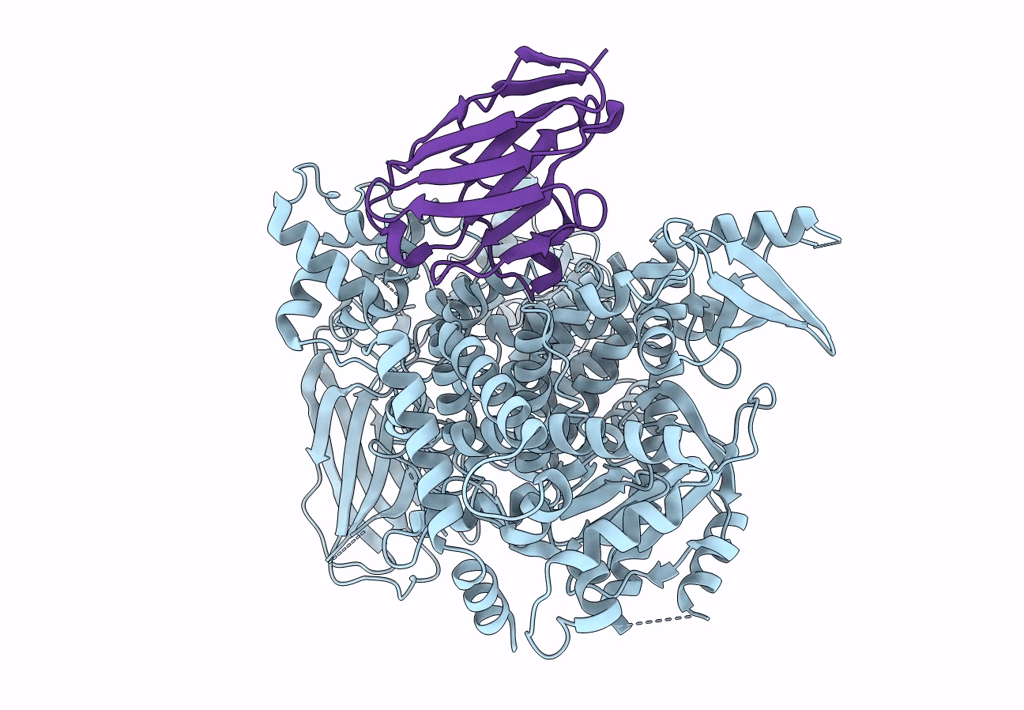
Deposition Date
2022-07-14
Release Date
2023-07-19
Last Version Date
2025-06-04
Entry Detail
PDB ID:
8DP0
Keywords:
Title:
Structure of p110 gamma bound to the Ras inhibitory nanobody NB7
Biological Source:
Source Organism:
Homo sapiens (Taxon ID: 9606)
Lama glama (Taxon ID: 9844)
Lama glama (Taxon ID: 9844)
Host Organism:
Method Details:
Experimental Method:
Resolution:
2.96 Å
Aggregation State:
PARTICLE
Reconstruction Method:
SINGLE PARTICLE


